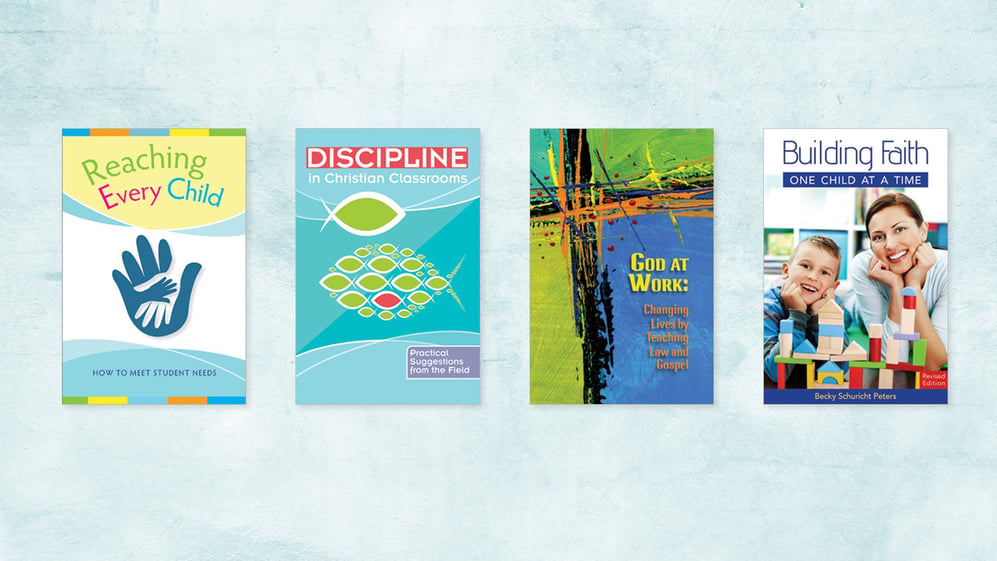"We wish to see Jesus." (John 12:21)
Every Sunday School teacher wants to help her students see Jesus' love and care for them as their Savior. But every child is different. So what is the best way to reach out to your students? How do you encourage other teachers? Here are four books that every Sunday School teacher should read.
Reaching Every Child
If you don't have advanced training for working with kids with special needs, help is available! This collection of practical articles include basic theories of child development, accommodating student needs, ideas for adapting and modifying lessons, recognizing types of disabilities, and shaping attitudes that others may have toward those who have disabilities. Reaching Every Child gives you doable, practical strategies for teaching all children.
Discipline in Christian Classrooms
For the Sunday School teacher, disciplining and discipling go hand in hand. Discipline in Christian Classrooms will help you effectively plan and carry out Christ-centered discipline in your classroom while keeping your students' well-being as the goal of that discipline. "The Law must be applied so that, after repentance, the growing disciple may realize again the comfort and assurance of forgiveness found in the Gospel" (Discipline in Christian Classrooms, page 6).
God at Work
Speaking of Law and Gospel . . . is it important to know the difference between the two? Does it matter how and when each is taught? The answer is yes, yes, and yes! Discover the difference between Law and Gospel and why every person needs to hear both messages with God at Work. You'll find better ways to communicate why we need a Savior, who Jesus is, and what He did for us. It will help you teach lessons that move beyond the facts and to the heart of God and His purpose for our lives.
Building Faith One Child at a Time
Knowing that only God can provide the power for faith to grow, this book is a worthwhile guide for the Sunday School teacher. With updated theories on child development, Building Faith One Child at a Time takes a look at various age groups and applies human and faith development theories. It brings to light twenty-first-century classroom considerations such as dealing with cyber bullying and negative online behaviors and building faith through service to others.














